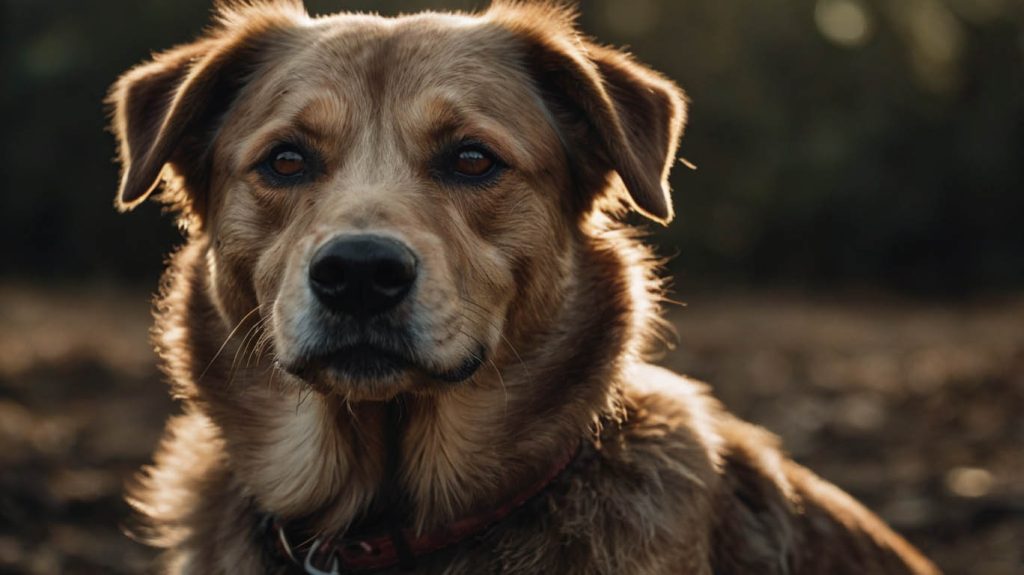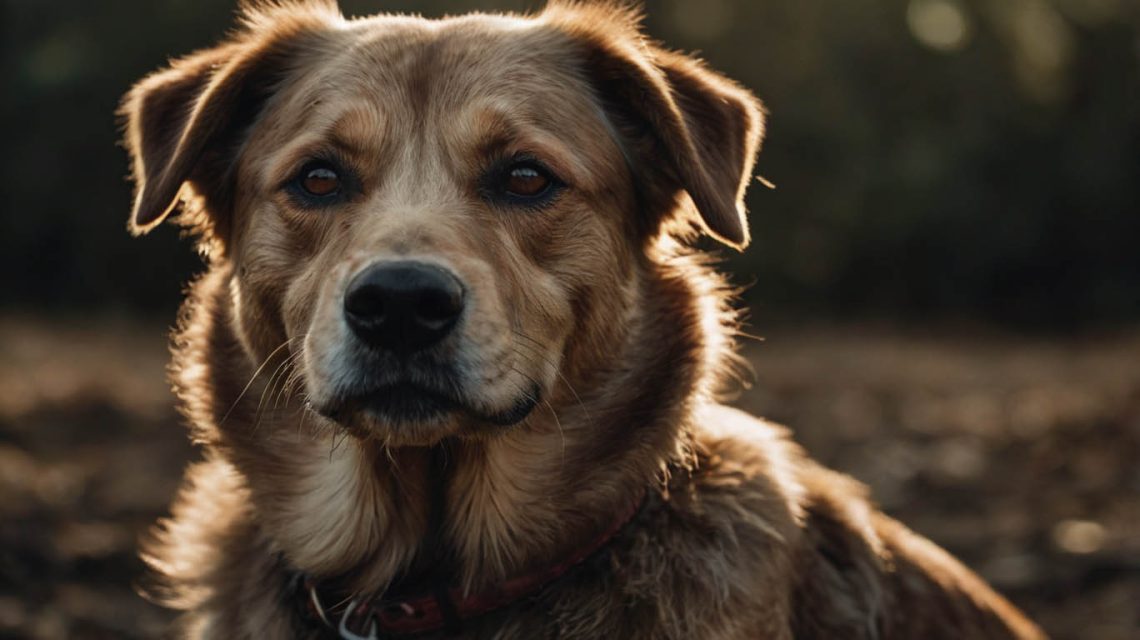You look at the dog curled up at your feet, and a wave of memories washes over you. You remember the tiny, clumsy puppy who could barely navigate the stairs, the rambunctious adolescent who chewed your favorite shoes, and the loyal adult who has been your constant companion through thick and thin. But lately, you’ve noticed subtle shifts. The muzzle is a little grayer, the naps are a little longer, and the get-up-and-go has gotten up and gone. It’s a quiet, poignant realization: your best friend is entering their golden years. Consequently, you begin to search for answers, wanting to understand these changes and how you can best support them. Recognizing the signs of aging in dogs is the first, most crucial step in this new chapter.
This journey into your dog’s senior years can feel daunting, filled with uncertainty. However, it’s important to see this not as an end, but as a transition. Aging is a natural process, not a disease. Therefore, this guide is designed to empower you. We will walk you through the common physical and behavioral changes, help you differentiate between normal aging and potential health problems, and provide actionable advice to ensure your dog’s senior years are as happy, comfortable, and full of love as possible.
First, When Does a Dog Become a “Senior”?
Before we can identify the signs of aging, it’s helpful to know when to start looking for them. There is no single age when a dog becomes a senior. It largely depends on their size and breed.
- Small Breeds (under 20 pounds): Generally considered seniors around 8-11 years old.
- Medium Breeds (20-50 pounds): Typically enter their senior years around 8-10 years old.
- Large and Giant Breeds (over 50 pounds): Age more quickly and are often considered seniors as early as 6-7 years old.
Regardless of their specific age, being observant is your most powerful tool.

Physical Signs of Aging in Dogs to Watch For
These are often the most noticeable changes, providing clear clues about your dog’s aging process.
Changes in Mobility: A Key Sign of Aging in Dogs
This is one of the most common physical changes. You might notice your dog is slower to get up in the morning, hesitant to jump on the sofa, or reluctant to climb stairs.
- What it Looks Like: Stiffness, limping, lagging behind on walks, or difficulty finding a comfortable position to lie down.
- What it Could Mean: Often, these are symptoms of osteoarthritis, a progressive joint disease that is very common in older dogs. While it can’t be cured, its symptoms can be managed very effectively with your vet’s help.
The “Graying” Effect: A Visible Sign of Aging in Dogs
Just like humans, many dogs go gray with age.
- What it Looks Like: You’ll typically see white or gray hairs appear first around the muzzle and eyes, gradually spreading to other parts of their face and body.
- What it Means: This is a completely normal and harmless cosmetic change, one of the most classic signs of aging in dogs.
Lumps, Bumps, and Skin Changes
Running your hands over your dog and finding a new lump can be scary.
- What it Looks Like: You may feel soft, fatty lumps under the skin, or notice new warts, skin tags, or other growths. Their skin may also become drier and their coat thinner.
- What it Could Mean: Many of these are benign fatty tumors called lipomas, which are common in seniors. However, you should always have any new lump or bump checked by your veterinarian to rule out anything more serious.
Dental Issues and “Doggy Breath”
Oral health often declines with age.
- What it Looks Like: Worsening bad breath, visible tartar (a brownish buildup on the teeth), red or bleeding gums, or even difficulty chewing hard food.
- What it Could Mean: This often points to periodontal disease, which is not just a cosmetic issue. It can be painful and lead to tooth loss. Furthermore, the bacteria from gum disease can enter the bloodstream and affect major organs.
Changes in Vision and Hearing
A decline in sensory perception is a common part of aging.
- Vision Changes: You might notice their eyes appear cloudy, a condition called lenticular sclerosis (which is normal) or cataracts (which can impair vision). They may start bumping into furniture or be more hesitant in the dark.
- Hearing Loss: They may not respond when you call their name, seem to sleep more soundly, or be easily startled when you approach from behind. These are classic signs of aging in dogs.
Weight Fluctuations: An Important Sign of Aging in Dogs
A change on the scale can be an important clue.
- Weight Gain: A senior dog’s metabolism slows down, and they are often less active, making them prone to weight gain. Excess weight puts significant strain on their joints.
- Weight Loss: Unexplained weight loss, on the other hand, can be a sign of an underlying health problem, such as dental issues, kidney disease, or diabetes, and should always be investigated by a vet.

Behavioral and Cognitive Signs of Aging in Dogs
These changes can be more subtle but are just as significant as the physical ones.
Increased Sleep and Decreased Energy
It’s normal for a senior dog to slow down and sleep more. However, you need to distinguish between normal aging and a medical problem. A gradual decrease in stamina is expected, but a sudden onset of extreme tiredness (lethargy) warrants a vet visit.
Anxiety and Clinginess: A Common Sign of Aging in Dogs
As their senses decline, the world can become a more confusing and scary place.
- What it Looks Like: Your once-independent dog may now follow you from room to room, show signs of separation anxiety when you leave, or seek more physical contact and reassurance.
Confusion and Disorientation (Canine Cognitive Dysfunction)
Canine Cognitive Dysfunction (CCD), often called “doggy dementia,” is a genuine neurological condition.
- What it Looks Like: This is more than just “getting old.” Symptoms include seeming lost or confused in familiar surroundings, getting stuck in corners, forgetting routines, staring blankly at walls, and changes in their sleep-wake cycle (e.g., being restless and pacing at night).
Changes in House Training
An older dog who suddenly starts having accidents in the house is sending a signal. It could be a medical issue like a UTI or kidney disease, a mobility issue where they can’t get outside fast enough, or a cognitive issue where they’ve simply forgotten their training.
What to Do When You Notice Signs of Aging in Dogs
Observing these signs is the first step. Taking action is the next.
- Partner with Your Veterinarian: This is your most important step. Schedule a “senior wellness exam.” Your vet can perform baseline blood work, diagnose conditions like arthritis, and create a proactive health plan.
- Adjust Their Diet: Switch to a high-quality senior dog food, which is often lower in calories and may have added nutrients for joint support.
- Modify Their Exercise: Swap long runs for shorter, more frequent gentle walks. Low-impact activities like swimming are excellent.
- Adapt Your Home: Make their life easier with an orthopedic bed, non-slip rugs on slick floors, and ramps to help them get into the car.
A New Chapter of Love and Care
The signs of aging in dogs are a reminder that our time with them is precious. This new phase is not about loss; it is about a deeper level of care, understanding, and love. By being a vigilant observer and a proactive partner in their health, you can ensure that your dog’s golden years are filled with comfort, dignity, and the unwavering companionship you have always shared.
What signs of aging have you noticed in your dog? Share your experiences and support other senior dog parents in the comments below!


